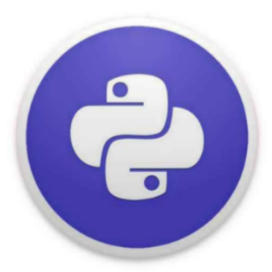25条实用简洁的Python代码
今天整理的25个常用的Python代码段请果断收藏起来,如果觉得足够好用记得分享给你身边的朋友和同事哟~1交换两个变量的值num_1, num_2 = 666, 999# 一行代码搞定交换两个变量的值num_1, num_2 = num_2, num_1print(num_1, num_2)输出:999 666Process finished with exit code 02查找对象使用的内存i
·
今天整理的25个常用的Python代码段请果断收藏起来,如果觉得足够好用记得分享给你身边的朋友和同事哟~
1交换两个变量的值
num_1, num_2 = 666, 999# 一行代码搞定交换两个变量的值num_1, num_2 = num_2, num_1print(num_1, num_2)输出:999 666Process finished with exit code 0
2查找对象使用的内存
import sysslogan = "今天你学python了么?"size = sys.getsizeof(slogan)print(size)输出:100Process finished with exit code 0
3反转字符串
slogan = "今天你学习python了么?"# 一行代码搞定字符串的反转new_slogan = slogan[::-1]print(new_slogan)输出:?么了nohtyp习学你天今Process finished with exit code 0
4检查字符串是否为回文
# 定义一个判断字符串是否是回文的函数def is_palindrome(string):return string == string[::-1]示例:调用判断函数来进行判断slogan是否是回文字符串slogan = "今天你学python了么?"_ = is_palindrome(slogan)print(_)输出:FalseProcess finished with exit code 0
5将字符串列表合并为单个字符串
slogan = ["今", "天", "你", "学", "python", "了", "么", "?"]# 一行代码搞定将字符串列表合并为单个字符串real_slogan = "".join(slogan)print(real_slogan)输出:今天你学python了么?Process finished with exit code 0
6查找存在于两个列表中任一列表存在的元素
# 定义一个函数用来查找存在于两个列表中任一列表存在的元素def union(list1, list2):return list(set(list1 + list2))示例:调用该函数用来查找存在于两个列表中任一列表存在的元素list1, list2 = [5, 2, 0], [5, 2, 1]new_list = union(list1, list2)print(new_list)输出:[0, 1, 2, 5]Process finished with exit code 0
7打印N次字符串
slogan = "今天你学python了么?"new_slogan = 11*sloganprint(new_slogan)输出:今天你学python了么?今天你学python了么?今天你学python了么?今天你学python了么?今天你学python了么?今天你学python了么?今天你学python了么?今天你学python了么?今天你学python了么?今天你学python了么?今天你学python了么?Process finished with exit code 0
8链式比较
number = 100print(98<number<102)输出:TrueProcess finished with exit code 0print(100==number<102)输出:TrueProcess finished with exit code 0
9单词大小写
slogan = "python happy"# 一行代码搞定单词大小写转换print(slogan.upper())# 一行代码搞定单词首字母大写print(slogan.capitalize())# 一行代码搞定将每个单词的首字母转为大写,其余小写print(slogan.title())输出:PYTHON HAPPYPython happyPython HappyProcess finished with exit code 0
10统计列表中元素的频率
from collections import Counternumbers = [1, 1, 3, 2, 4, 4, 3, 6]# 一行代码搞定求列表中每个元素出现的频率count = Counter(numbers)print(count)输出:Counter({1: 2, 3: 2, 4: 2, 2: 1, 6: 1})Process finished with exit code 0
11判断字符串所含元素是否相同
from collections import Countercourse = "python"new_course = "ypthon"count_1, count_2 = Counter(course), Counter(new_course)if count_1 == count_2:print("两个字符串所含元素相同!")输出:两个字符串所含元素相同!Process finished with exit code 0
12将数字字符串转化为数字列表
string = "666888"numbers = list(map(int, string))print(numbers)输出:[6, 6, 6, 8, 8, 8]Process finished with exit code 0
13使用enumerate() 函数来获取索引-数值对
string = "python"for index, value in enumerate(string):print(index, value)输出:0 p1 y2 t3 h4 o5 nProcess finished with exit code 0
14代码执行消耗时间
import timestart_time = time.time()numbers = [i for i in range(10000)]end_time = time.time()time_consume = end_time - start_timeprint("代码执行消耗的时间是:{}".format(time_consume))输出示例:代码执行消耗的时间是:0.002994537353515625Process finished with exit code 0
15比较集合和字典的查找效率
import timenumber = 999999# 生成数字列表和数字集合numbers = [i for i in range(1000000)]digits = {i for i in range(1000000)}start_time = time.time()# 列表的查找_ = number in numbersend_time = time.time()print("列表查找时间为:{}".format(end_time - start_time))start_time = time.time()# 集合的查找_ = number in digitsend_time = time.time()print("集合查找时间为:{}".format(end_time - start_time))输出:列表查找时间为:0.060904741287231445集合查找时间为:0.0Process finished with exit code 0
16字典的合并
info_1 = {"apple": 13, "orange": 22}info_2 = {"爆款写作": 48, "跃迁": 49}# 一行代码搞定合并两个字典new_info = {**info_1, **info_2}print(new_info)输出:{'apple': 13, 'orange': 22, '爆款写作': 48, '跃迁': 49}Process finished with exit code 0
17随机采样
import randombooks = ["爆款写作", "这个世界,偏爱会写作的人", "写作七堂课", "越书写越明白"]# 随机取出2本书阅读reading_book = random.sample(books, 2)print(reading_book)输出:['这个世界,偏爱会写作的人', '越书写越明白']Process finished with exit code 0
18判断列表中元素的唯一性
# 定义一个函数判断列表中元素的唯一性def is_unique(list):if len(list) == len(set(list)):return Trueelse:return False# 调用该函数判断一个列表是否是唯一性的numbers = [1, 2, 3, 3, 4, 5]_ = is_unique(numbers)print(_)输出:FalseProcess finished with exit code 0
19计算阶乘 递归函数实现
def fac(n):if n > 1:return n*fac(n-1)else:return 1number = int(input("n="))print("result = {}".format(fac(number)) )输出:n=5result = 120Process finished with exit code 0
20列出当前目录下的所有文件和目录名
import osfiles = [file for file in os.listdir(".")]print(files)输出:['.idea', '2048.py', 'access.log', 'beautiful_girls', 'beautiful_girls_photos', 'boy.py', 'cache.json', 'catoffice.py', 'cookie.json', 'data.csv', 'data.txt', 'diary', 'files', 'filtered_words.txt', 'geckodriver.log', 'get_movies_info2.py', 'girl.py', 'girl1.py', 'ha.conf', 'homework.py', 'homework3.py', 'index.html', 'info.ini', 'notepad.py', 'rent.csv', 'stock.txt', 'student.txt', 'student.xlsx', 'student_register_info.json', 'test.png', 'test_picture.txt', 'zhihu.html', '__pycache__', '九尾1997_200行代码实现2048小游戏.py', '九尾1997_python实现图片转字符画.py', '九尾1997_实现一个简单的计算器.py', '九尾1997_爬取优美图美女写真.py', '九尾1997_爬取北京58租房信息.py', '九尾1997_路飞学城注册页面', '校园管理系统.py', '爬虫模拟登录.py', '记事本.m4a']Process finished with exit code 0
21把原字典的键值对颠倒并生产新的字典
dict_1 = {1: "python", 2: "java"}new_dict = {value:key for key, value in dict_1.items()}print(new_dict)输出:{'python': 1, 'java': 2}Process finished with exit code 0
22打印九九乘法表
for i in range(1, 10):for j in range(1, i+1):print("{} * {} = {}".format(i, j, i*j), end="")print()输出:1 * 1 = 12 * 1 = 2 2 * 2 = 43 * 1 = 3 3 * 2 = 6 3 * 3 = 94 * 1 = 4 4 * 2 = 8 4 * 3 = 12 4 * 4 = 165 * 1 = 5 5 * 2 = 10 5 * 3 = 15 5 * 4 = 20 5 * 5 = 256 * 1 = 6 6 * 2 = 12 6 * 3 = 18 6 * 4 = 24 6 * 5 = 30 6 * 6 = 367 * 1 = 7 7 * 2 = 14 7 * 3 = 21 7 * 4 = 28 7 * 5 = 35 7 * 6 = 42 7 * 7 = 498 * 1 = 8 8 * 2 = 16 8 * 3 = 24 8 * 4 = 32 8 * 5 = 40 8 * 6 = 48 8 * 7 = 56 8 * 8 = 649 * 1 = 9 9 * 2 = 18 9 * 3 = 27 9 * 4 = 36 9 * 5 = 45 9 * 6 = 54 9 * 7 = 63 9 * 8 = 72 9 * 9 = 81Process finished with exit code 0
23计算每个月天数
import calendarmonth_days = calendar.monthrange(2025,8)print(month_days)输出:(4, 31)Process finished with exit code 0
24随机生成验证码,调用随机模块
import random, stringstr_1 = "0123456789"# str_2 是包含所有字母的字符串str_2 = string.ascii_lettersstr_3 = str_1 + str_2# 多个字符中选取特定数量的字符verify_code = random.sample(str_3, 6)# 使用join方法拼接转换为字符串verify_code = "".join(verify_code)print(verify_code)输出:Mk0L6YProcess finished with exit code 0
25判断闰年
year = input("请输入一个年份:")year = int(year)# 一行代码判断年份是否是闰年if year % 4 == 0 and year % 100 != 0 or year % 400 == 0:print("{}是闰年!".format(year))else:print("{}不是闰年!".format(year))输出示例:请输入一个年份:20002000是闰年!Process finished with exit code 0
996 一直是互联网老生常谈的话题了,但抛开其他只谈工作本身,你有没有想过,下班晚、加班,有时候可能是因为自己工作比较低效?
所以,平时多积累好用、常用、简洁的代码段真的非常有必要。
再次强调一下,如果觉得这些代码段有帮助,请一定要收藏起来,另外也不要忘了分享给你身边的朋友和同事哟~

更多推荐
 已为社区贡献6条内容
已为社区贡献6条内容









所有评论(0)